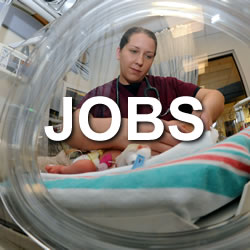Bronchiolitis Obliterans
We should only write the word “Popcorn” on cartons of snacks in movie theaters, not on our patients’ records - Florida Lung, Asthma & Sleep Specialists

image by: darlene Phillips deedee
HWN Recommends
Will Microwave Popcorn Ruin My Lungs?
As a child of the ’90s, I’ll forever be a tiny bit terrified of the radioactive potential of microwaves, and standing too close to them. My natural inclination is to watch my food closely, which meant my mother had to tell me to take my face away from the microwave door as soon as I was tall enough to reach it. When I made instant oatmeal or Swiss Miss or the occasional hot Pop-Tart (very different from the toasted Pop-Tart) I would place them in the microwave, step back, and stand a foot to the side of it, like the microwave had peripheral vision I was trying to avoid. I have no scientific knowledge about the radioactive range of the average microwave, but I treat them like the sun: Don’t…
Resources
 Popcorn Lung and a New Habit That Increases Your Risk
Popcorn Lung and a New Habit That Increases Your Risk
In previous times doctors considered Popcorn Lung to be a rare condition. However, that assumption might soon change. In this blog, we bring you the fascinating story of this lung disease with a funny name. Plus, we will bring you a warning so you can reduce your risk of contracting it.
 Vaping: The Good, the Bad and the Popcorn Lung
Vaping: The Good, the Bad and the Popcorn Lung
So what is the vaping-popcorn lung connection? Most high-end vape makers don’t use diacetyl, but in 2015, more than half of the mass-market e-cigarettes studied were found to contain the chemical – especially flavored vape juice. The diacetyl makes the flavors richer, but because the vapor is being breathed in, it exposes users to the risk of popcorn lung, which increases the longer these liquids are vaped. Particularly concerning is the fact that diacetyl is primarily found in flavored e-liquids – which tend to be more appealing to teenagers.
Does microwave popcorn really cause lung disease?
Rose says there isn’t a lot of scientific data that can tell us the safest way to prepare and eat microwave popcorn, but she has some advice: “Try to avoid taking deep breaths of the vapors when the heated bags are first opened, just to be safe.” And while you’re at it, you’ll probably want to avoid e-cigs, too.
How Vaping could Cause a Condition Called Popcorn Lung
One of the inhaled chemicals associated with the cause of popcorn lung is Diacetyl. Diacetyl is a chemical used in many processed foods to impart a buttery or creamy flavor. In the past, it was used by manufacturers to give popcorn its buttery taste and in 2002 eight cases of irreversible lung disease were documented in people who had worked at a Missouri popcorn factory between 1992 and 2000. This is where the condition’s name is derived from. But as well as being found in foods, the chemical has also been found in the flavoring of e-liquids in e-cigarettes - before it was banned in 2016 under EU law.
Popcorn Lung: A Dangerous Risk of Flavored E-Cigarettes
Over a decade ago, workers in a microwave popcorn factory were sickened by breathing in diacetyl—the buttery-flavored chemical in foods like popcorn, caramel and dairy products. While this flavoring may be tasty, it was linked to deaths and hundreds of cases of bronchiolitis obliterans, a serious and irreversible lung disease. As a result, the major popcorn manufacturers removed diacetyl from their products, but some people are still being exposed to diacetyl - not through food flavorings as a worksite hazard, but through e-cigarette vapor.
The Chemical Marketplace: Popcorn Lung — The Perils of Microwave Popcorn Return
More than 80,000 chemicals are produced and used in the United States. This is one of theirstories. When it comes to microwave popcorn, best to emulate Bill Clinton: Don’t inhale.
The flavoring chemicals in e-cigarettes are linked to a disease known as “popcorn lung”
Researchers at Harvard’s school of public health have published a new study about the safety of electronic cigarettes, and it has nothing to do with nicotine. More than 75% of the flavored e-cigarettes the researchers tested contained the chemical diacetyl, which multiple studies have linked to lung damage.
 Will Microwave Popcorn Ruin My Lungs?
Will Microwave Popcorn Ruin My Lungs?
Despite the relatively jocular-sounding name, popcorn lung is the nickname given to bronchiolitis obliterans, a condition which causes coughing and shortness of breath—and a condition which is thought to be caused, at least sometimes, by diacetyl—a chemical sometimes used to flavor microwave popcorn.
Bronchiolitis Obliterans (Obliterative Bronchiolitis, Constrictive Bronchiolitis)
Several risk factors can lead to the development of bronchiolitis obliterans. It is one of the most common noninfectious complications after lung transplant and hematopoietic stem cell transplantation. Outside of transplantation, bronchiolitis obliterans can be seen after exposure to inhaled toxins and gases including sulfur mustard gas, nitrogen oxides, diacetyl (used as popcorn flavoring), fly ash and fiberglass. Bronchiolitis obliterans is also associated with autoimmune disorders, especially rheumatoid arthritis and less commonly with inflammatory bowel disease. It is also known to occur after a respiratory viral infection (adenovirus, respiratory syncytial virus), especially in children.
GARD
Bronchiolitis obliterans is an inflammatory condition that affects the lung's tiniest airways, the bronchioles. In affected people, the bronchioles may become damaged and inflamed leading to extensive scarring that blocks the airways. Signs and symptoms of the condition include a dry cough; shortness of breath; and/or fatigue and wheezing in the absence of a cold or asthma.[1][2][3] Many different chemicals (such as nitrogen oxides, ammonia, welding fumes or food flavoring fumes) and respiratory infections can cause lung injury that leads to bronchiolitis obliterans.

Introducing Stitches!
Your Path to Meaningful Connections in the World of Health and Medicine
Connect, Collaborate, and Engage!
Coming Soon - Stitches, the innovative chat app from the creators of HWN. Join meaningful conversations on health and medical topics. Share text, images, and videos seamlessly. Connect directly within HWN's topic pages and articles.













